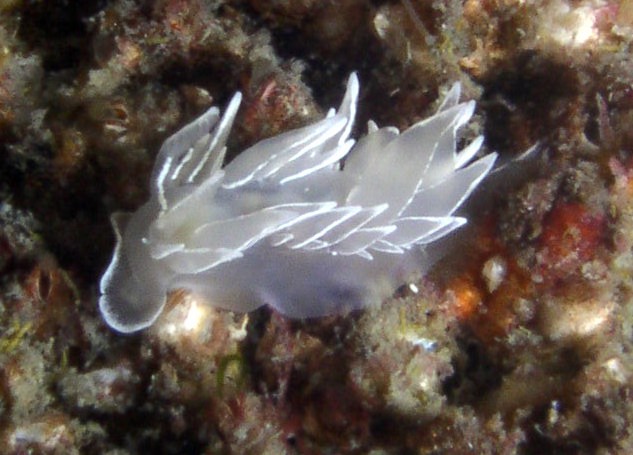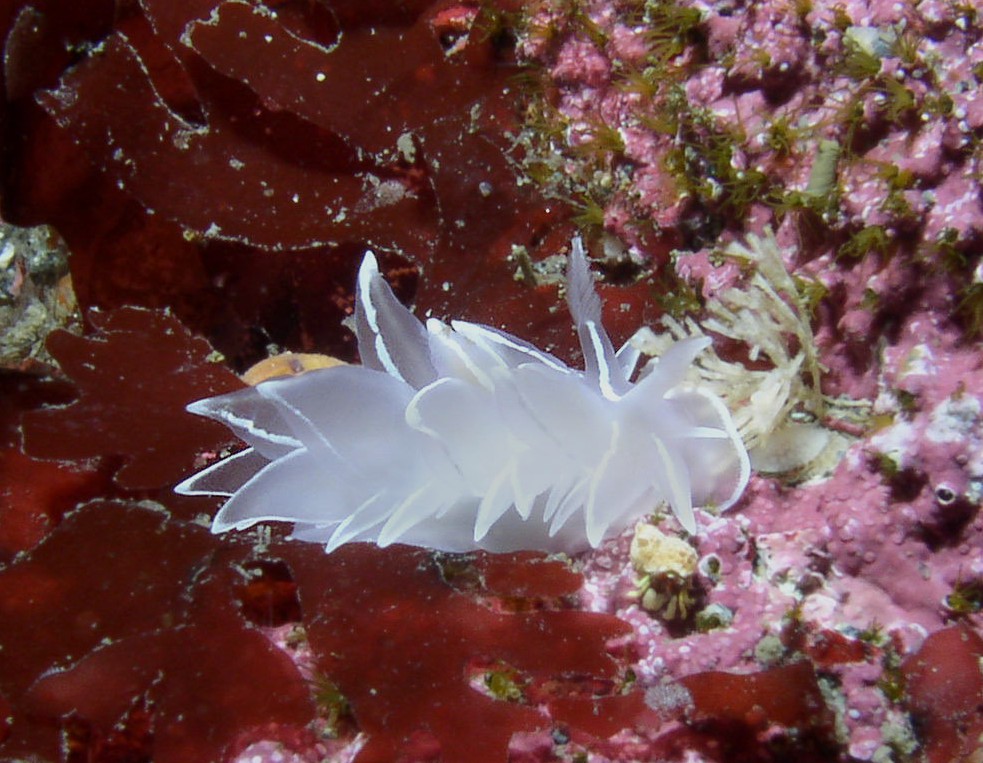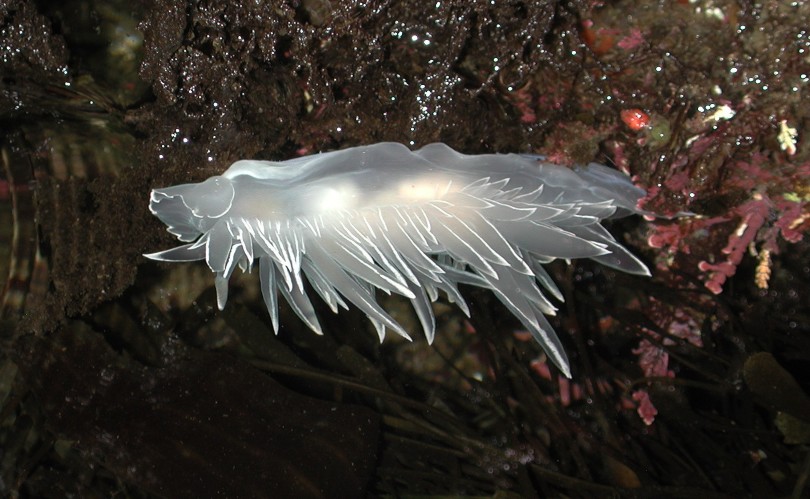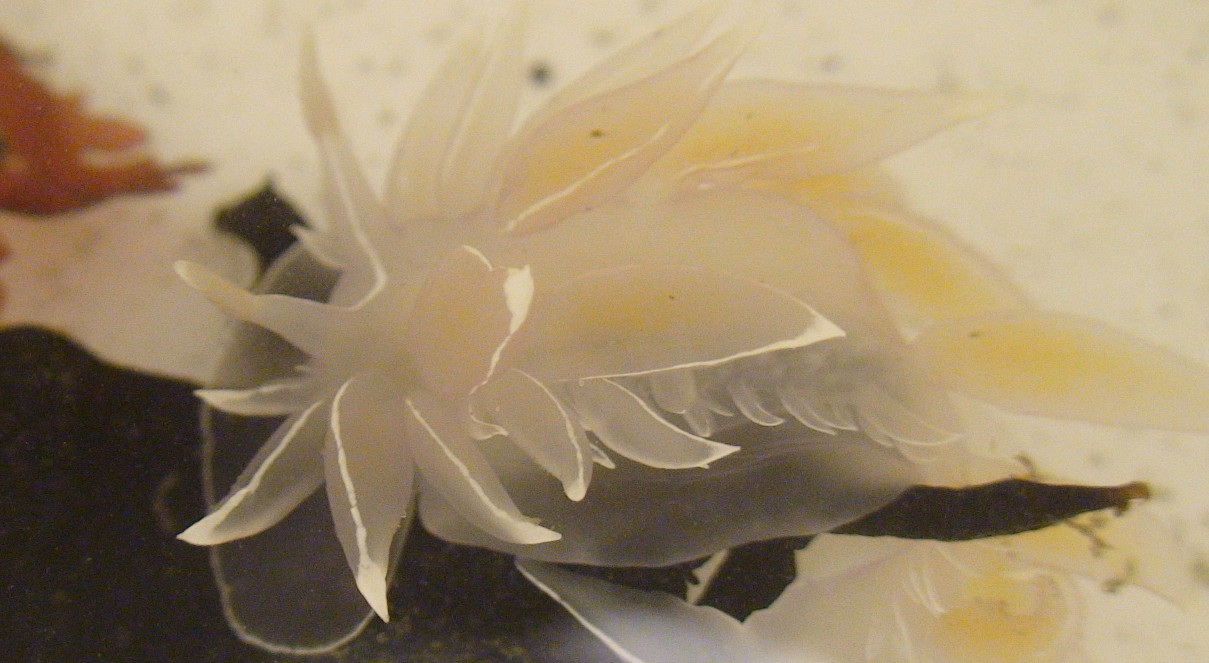Dirona albolineata Mac Farland in Cockerell & Eliot, 1905 (or Eliot, 1905)Common name(s): White-lined Dirona, Frosted nudibranch, Alabaster nudibranch, Chalk-lined dirona |
|
| Synonyms: |  |
|
Class Gastropoda
Family Dironidae
|
|
| Dirona albolineata from Coffin Rocks, depth about 12 m. | |
| (Photo by: Kirt Onthank, summer 2007) | |
How to Distinguish from Similar Species: The cerata on many Arminaceans such as this species often make them look a lot like Eolid nudibranchs, but they can be distinguished from Eolids because Arminaceans have the anus on a papilla on the rear third of the body (right side) while Eolids have it on the anterior third of the body (right side). Dirona aurantia has similar-shaped cerata but the overall color is orange, it has no white line on its frontal veil, on its tail, or between its cerata, and it has scattered white spots.
Geographical Range: Kachemak Bay, Alaska to San Diego, CA; Japan, East Russia
Depth Range: Intertidal to 37 m.
Habitat: Usually on rocks, occasionally on mud
Biology/Natural History:
The cerata
fall off easily. Feeds on small snails such as Margarites
pupillus and Lacuna
carinatus
by cracking the shells with its jaws. Also feeds on sea
anemones,
hydroids,
tunicates,
and bryozoans (photo).
Their egg
mass contains about 350,000 eggs.
| Return to: | |||
| Main Page | Alphabetic Index | Systematic Index | Glossary |
References:
Dichotomous Keys:Flora and Fairbanks, 1966 (as Dirona albalineata)
Kozloff 1987, 1996
Smith and Carlton, 1975
General References:
Behrens,
1991
Brusca
and Brusca, 1978
Harbo,
1999
Kozloff,
1993
McDonald
and Nybakken, 1980
Morris
et al., 1980
Niesen,
1997
Ricketts
et al., 1985
Scientific Articles:
Web sites:
General Notes and
Observations: Locations,
abundances, unusual behaviors:

This individual is grazing on a bryozoan. Photo by Kirt
Onthank,
summer 2007

This individual is crawling along the edge of a tide pool at low tide,
Cape Flattery. Photo by Dave Cowles, July 2008
Authors and Editors of Page:
Dave Cowles (2007): Created original page
CSS coding for page developed by Jonathan Cowles (2007)

